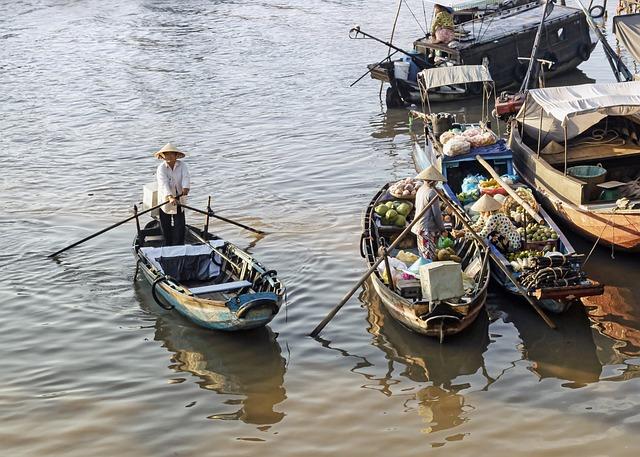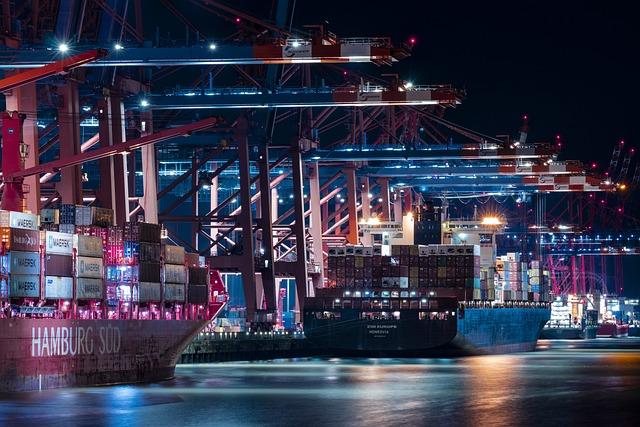In the heart of South Asia, Pakistan stands as a vibrant tapestry woven with diverse cultures, rich histories, and a resilient spirit. As the nation strides forward into an era defined by globalization and interconnectedness, its economic landscape is undergoing a profound transformation. The journey of navigating economic opportunities in Pakistan is not just about statistics and trade agreements; it is a narrative filled with potential, challenges, and the promise of growth. In this article, we will explore the contours of Pakistan’s trade landscape, examining the sectors primed for investment, the evolving dynamics of regional and international markets, and the strategic initiatives paving the way for a more robust economic future. Join us as we delve into the intricacies of trade in Pakistan—a realm where opportunities await those willing to venture beyond the surface.
Understanding the Current Dynamics of Pakistans Trade Environment
The trade environment in Pakistan is characterized by a complex interplay of local and international factors that influence economic growth. As the nation grapples with structural changes and evolving needs, it is essential to recognize the pivotal role of trade agreements and regional partnerships. Key dynamics include:
- Geopolitical Shifts: Pakistan’s strategic position links it to major markets in Asia and beyond, including fast-growing economies like China and India.
- Policy Reforms: Recent initiatives aimed at enhancing trade facilitation and reducing bureaucratic hurdles are beginning to yield positive results.
- Technological Advancements: The rise of digital platforms is reshaping how businesses engage in cross-border trade, allowing for greater outreach and efficiency.
Moreover, the importance of diversifying export markets cannot be overstated. As reliance on traditional markets decreases, exploring new avenues becomes crucial for sustainable growth. The following table summarizes key exports and their respective shares in Pakistan’s trade portfolio:
| Product Category | Export Share (%) |
|---|---|
| Textiles | 60 |
| Rice | 10 |
| Leather Goods | 7 |
| Sports Goods | 5 |
| Fruits & Vegetables | 3 |

Identifying Key Sectors for Growth and Investment
As Pakistan continues to navigate its economic landscape, identifying sectors ripe for growth and investment becomes imperative. The country’s strategic geographic location offers a multitude of opportunities to tap into both domestic and international markets. Agriculture, for instance, remains a cornerstone of the economy, presenting avenues for innovation in sustainable practices and value-added products. With a wealth of natural resources, other promising sectors include textiles, which form the backbone of Pakistan’s exports, and information technology, where the burgeoning tech startup scene is gaining traction. These sectors not only illustrate potential profitability but also contribute significantly to employment and skill development.
Moreover, the energy sector is witnessing a transformation, particularly with the shift towards renewable energy sources. Given the global trend toward sustainable practices, investments in solar and wind energy projects can yield long-term benefits. Tourism also offers a unique opportunity for growth, leveraging Pakistan’s rich cultural heritage and diverse landscapes to attract international visitors. To provide a clearer picture, consider the following table showcasing key sectors, their potential, and current investment sentiments:
| Sector | Growth Potential | Current Investment Focus |
|---|---|---|
| Agriculture | High: Sustainable practices, value addition | Modernization, tech integration |
| Textiles | Medium: Export expansion, new markets | Quality improvement, sustainable fabrics |
| IT | High: Startup growth, global outsourcing | Skill development, venture capital |
| Renewable Energy | High: Solar, wind investments | Infrastructure development, policy support |
| Tourism | Medium: Cultural and eco-tourism | Marketing, infrastructure |

Leveraging Regional Trade Agreements for Economic Advantage
Pakistan stands at a unique crossroads of economic potential, particularly through its network of regional trade agreements. By strategically engaging with countries in its vicinity, the nation can unlock significant benefits that bolster various sectors. These agreements provide an opportunity for local businesses to expand their reach, ensuring access to new markets while stimulating competition and innovation. Among the key advantages are:
- Tariff Reductions: Cutting down on import taxes can invigorate industries, making raw materials more affordable.
- Improved Trade Relations: Strengthened ties often lead to increased investments and collaborative ventures.
- Market Access: Enjoying preferential access in partner countries enhances export capacities.
Moreover, tapping into regional trade frameworks allows Pakistan to diversify its trade portfolio, mitigating risks linked with over-reliance on any single economy. The potential for value addition in key sectors like textiles, agriculture, and technology becomes more pronounced when enriched by supportive policies. To visualize the comparative advantages of participating in these agreements, the table below highlights key aspects:
| Trade Agreement | Key Benefit | Sector Impacted |
|---|---|---|
| SAFTA | Reduced tariffs on goods | Textiles, Agriculture |
| China-Pakistan Free Trade Agreement | Enhanced market access | Manufacturing, Electronics |
| ASEAN-Pakistan Free Trade Agreement | Investment opportunities | Tourism, Services |

Strategies for Enhancing Export Competitiveness and Market Access
To enhance export competitiveness and improve market access, businesses must focus on several key strategies. First, they should invest in technological advancement that leverages modern production techniques and enhances product quality. This not only increases efficiency but also meets international standards. Additionally, companies should cultivate strong relationships with local and international trade partners, as collaborations can facilitate knowledge transfer and access to new markets. Furthermore, by actively participating in trade fairs and exhibitions, businesses can showcase their products, network with potential buyers, and gain insights into market trends.
Another vital approach involves understanding and shifting according to global consumer preferences. Conducting thorough market research allows exporters to tailor their offerings to meet specific demands in targeted regions. Moreover, pursuing certifications and compliance with international regulations can enhance credibility and increase appeal to foreign customers. policy advocacy for reduced tariffs and barriers through collective efforts with industry associations can pave the way for easier access to international markets, fostering a robust export environment.
The Conclusion
As we conclude our exploration of Pakistan’s trade landscape, it becomes evident that the nation’s economic journey is a tapestry woven with intricate opportunities and complex challenges. The dynamic shifts in global markets, combined with Pakistan’s unique resource wealth and strategic geographic position, present a promising canvas for both local entrepreneurs and international investors. In navigating these economic opportunities, stakeholders must remain vigilant and adaptable, harnessing innovation while forging resilient partnerships.
The road ahead may be fraught with uncertainties, but it is also paved with potential for growth and prosperity. As Pakistan continues to redefine its role on the global stage, the vision for a thriving trade economy stands as a beacon of hope. The key lies in embracing the multifaceted nature of trade relations, strengthening governance frameworks, and fostering an environment ripe for investment.
the journey through Pakistan’s trade landscape is not merely about navigating the present; it is about envisioning a future where economic potential is unlocked and harnessed for the benefit of all. Let us remain hopeful and proactive, as we watch this vibrant narrative unfold, with the promise of a flourishing trade ecosystem at its heart.



